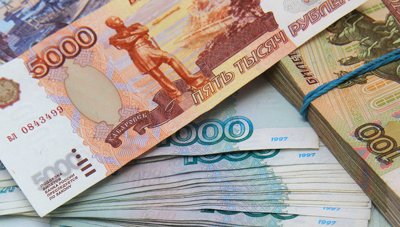The Russian ruble has fallen to a new low against the US dollar, as falling oil prices and Western sanctions continue to weigh on the country.
As of December 15, it takes more than 60 rubles to buy a single dollar.
The 60 mark is considered a “psychological barrier” for Russia’s national currency.
Since the beginning of 2014, the ruble has lost more than 45% of its value against the dollar.
Russia’s central bank has tried unsuccessfully to stabilize the currency, buying roubles in the markets and raising its main lending rate to 10.5%.
However, those efforts have been overwhelmed by the fall in the price of crude oil – one of the country’s main exports – and by concerns that international sanctions over Ukraine might be stepped up.
Russian authorities appear unable to bring down inflation either – prices are expected to be 10% higher by the end of the year.
In November, Russia’s central bank announced it was going ahead with a free float of the ruble by abolishing its unofficial link to the euro and the US dollar.
It also announced it was ending automatic interventions to support the currency, instead propping it up only when it was deemed necessary.
The bank had previously supported the ruble when the exchange rate against the euro and dollar exceeded certain limits.
However, last week, the bank admitted it intervened to support the ruble in foreign currency markets, spending a total of $4.53 billion.
The ruble has been heavily affected by the price of oil, which has been in steady decline in recent months.
On December 15, Brent crude fell to almost $60 per barrel – a five-year-low – before recovering to just above $61.
The dip came after the head of oil cartel OPEC reiterated at the weekend that the group would not reduce production to help shore up oil prices.
Russia’s central bank has warned that the country’s gross domestic product could contract by approximately 4.5% next year, if oil remains at $60 a barrel.
[youtube eH7dv8CqImU 650]
